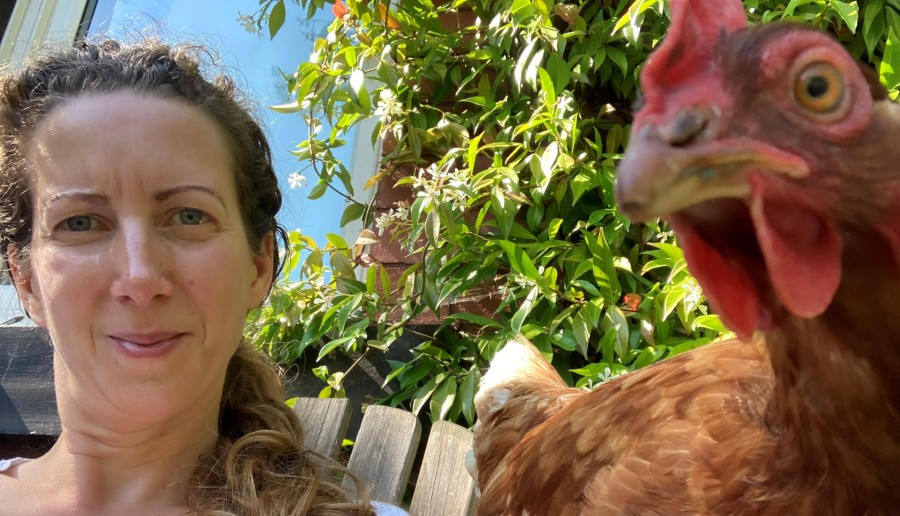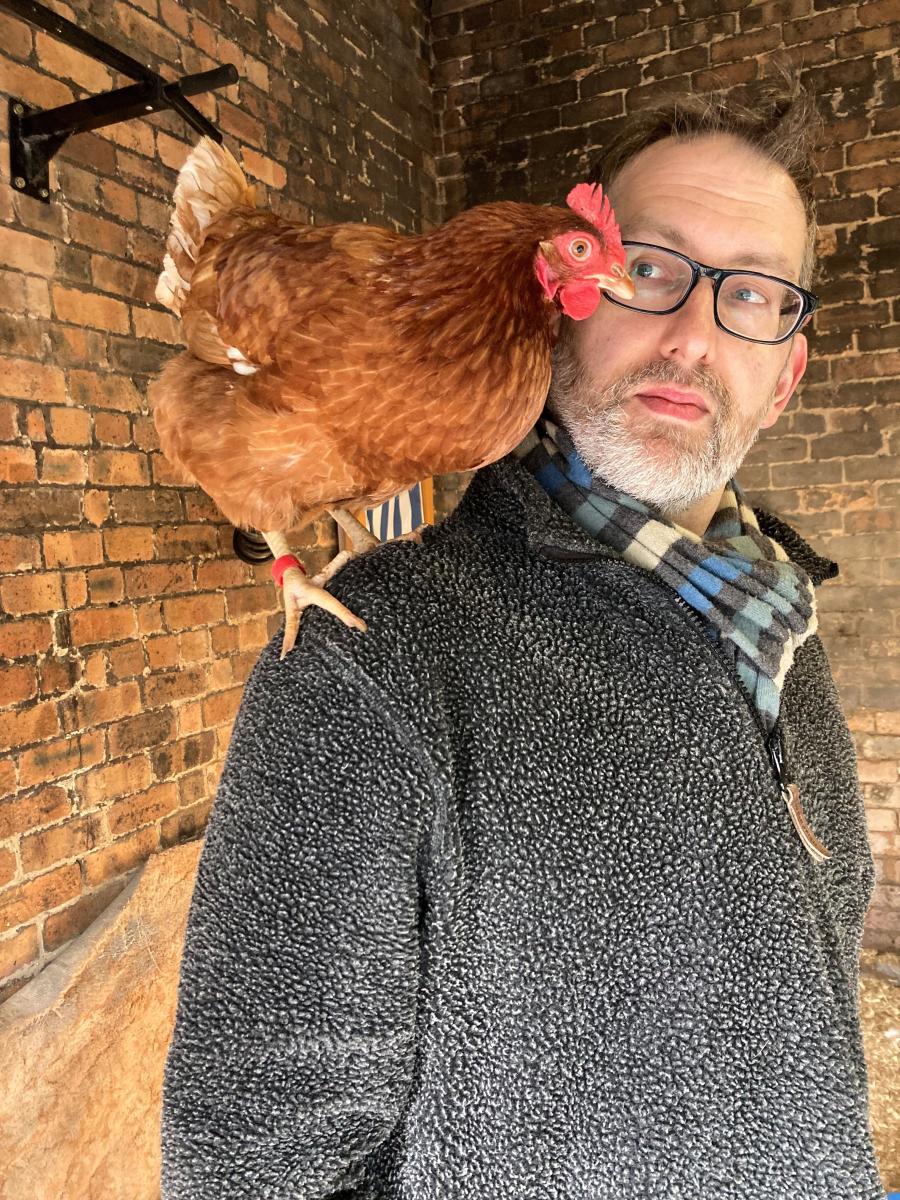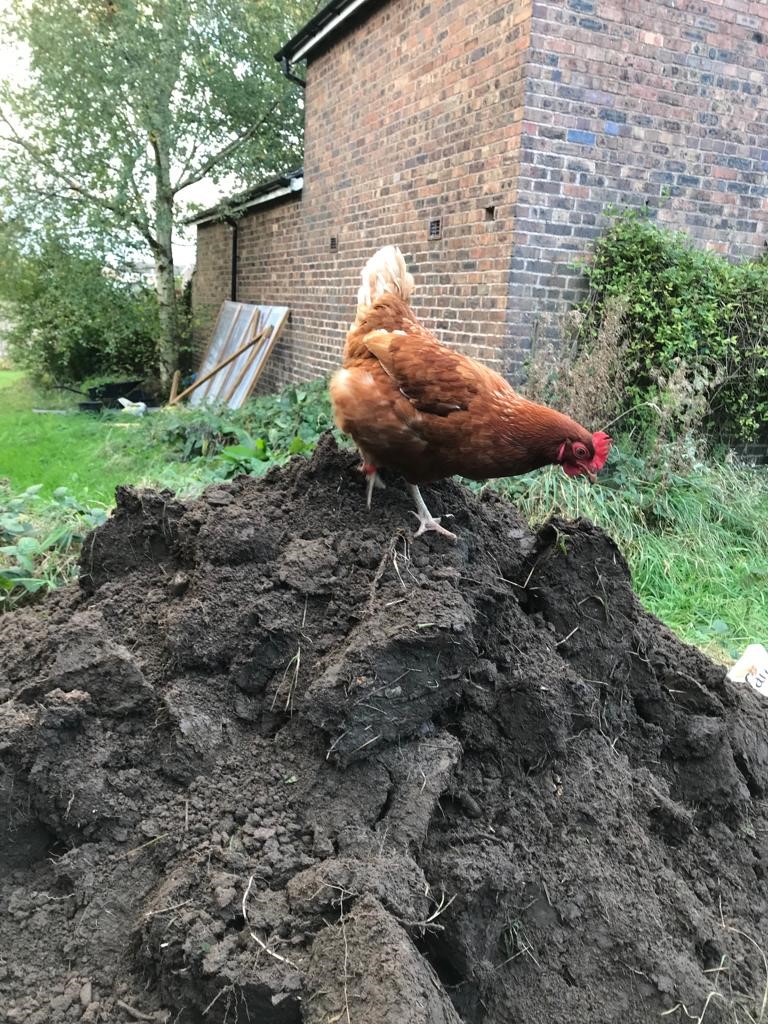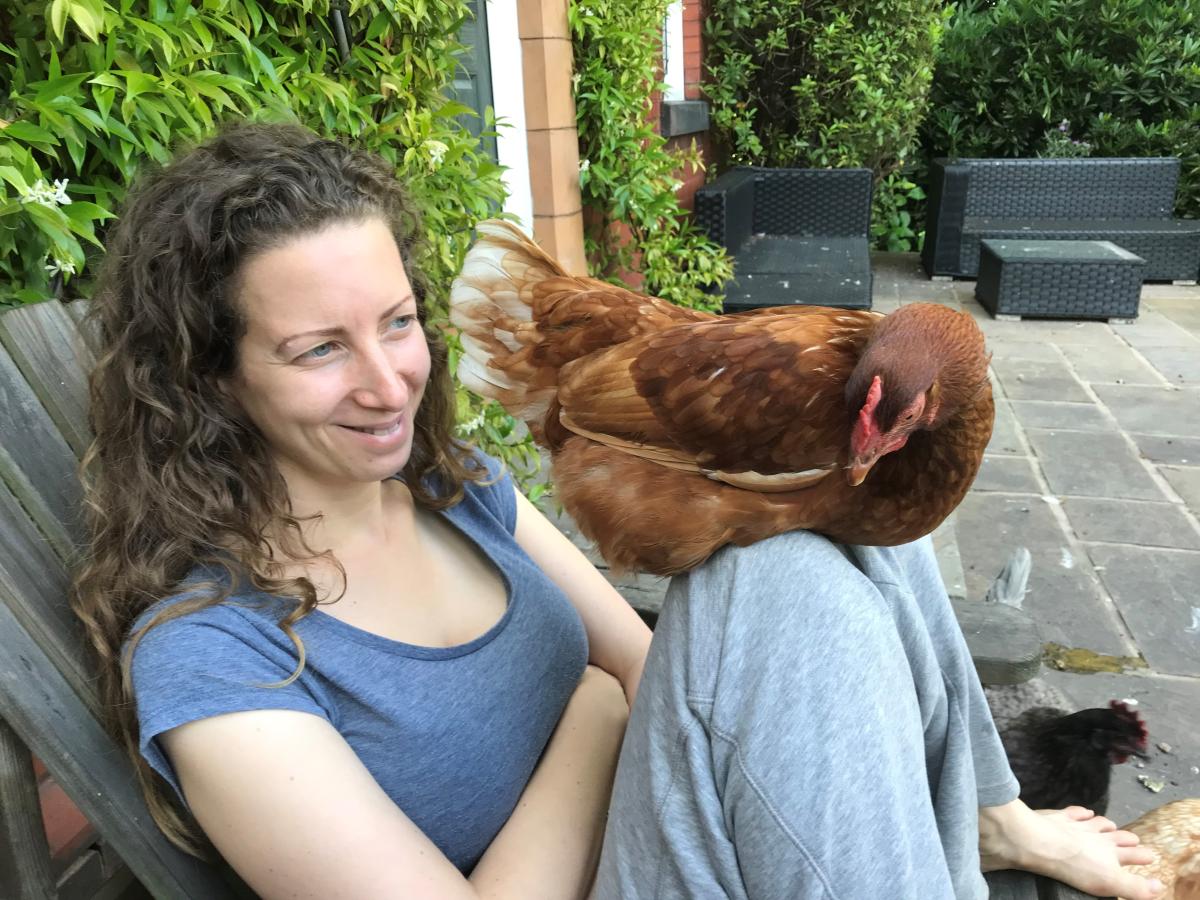Charlotte Houltram shares the joys of looking after ex-battery chickens, and gives her top tips for happy hens

My husband and I adopted our first flock of rescued hens six years ago. Although Daisy, Rosie, Jasmine, Poppy, Lily and Tulip are no longer with us, we remember their individual characters vividly.
Having lived with cats and dogs our whole lives, we knew that non-human animals have personalities, but what we weren't prepared for was being able to distinguish the chickens’ personalities so easily. After all, they are bred to be practically genetically identical, and they all came out of battery sheds having led the same hellish existence every day of their lives. How different could they be? 
But from day one, Daisy was in charge. She went everywhere with Rosie (the noisiest of hens), while Lily was the greedy guts of the group and Jasmine, the wiliest of the flock, never failed to surprise us with her antics. I could go on, but it's safe to say they were a total joy from the off. We watched them gain strength, grow their feathers back and explore the natural world around them. The poor things didn't know what was happening the first time it rained!
At first, we thought we would house them on a grassy plot behind the garage but soon realised we loved to watch them, so we kept them front and centre in the middle of the garden.
We rescued our hens from our fabulous local independent rescue in Wigan (luckyhensrescue.com). I would recommend searching online to see if you have an equivalent in your local area. However, non-species-specific animal rescues often also have unwanted chicks – many resulting from school hatching projects. Bear in mind that adopting cockerels is better suited to areas where neighbours aren't close by as their crowing can be very loud.
Getting set up
We rapidly discovered that we didn't require a specialist shop in order to buy everything we needed for our hens. There's nothing you need that can't be found easily and relatively cheaply online. Please remember they have come from a bare wire cage, so anything they get above that is a bonus for them. What I'm about to describe is what I flatter myself to be the five-star service but please don't be put off by this – they really are content with very little.
Purchase a coop
I would recommend getting a specialist coop (although an old rabbit hutch will do fine). I bought one with six nest boxes, but rapidly realised they prefer to sleep in a pile on one side, so need far less space than you might imagine. At one point we had 11 hens and they all seemed happy enough in that coop. Although the daily poo pick took a tad longer!
Be warned that hens are slaves to natural light. If it is dark at 4:00 PM they will put themselves to bed. If it's light at 4:00 AM they will get up, so unless you fancy keeping the same hours as nature intended, I highly recommend you get an automatic coop door opener – they’re battery operated and the batteries hardly ever need changing. Also, it will close the door at either a set time or at dusk, protecting your hens from attack if it’s dark before you get home.
Bedding
In terms of bedding, we use shavings for the coop floor and shredded paper for the nest boxes. We started on straw but found that it 1) was scratchy on their bare bottoms, 2) took ages to rot in the compost and 3) had to be bought in. Whereas now our neighbours donate their old newspapers which is another step towards a circular local economy.
A top tip to ensure red mites don't become a problem is to mix “Smite” powder in through the bedding. It's an entirely natural dust that is spiky at a microscopic level and stops the mites being able to move about and reproduce.
Feeder and water bowl
You will also need a feeder (a big one is good to save you filling it up too often – we now have nine hens and fill their feeders weekly) and a water bowl. We recommend a heavy ceramic dog bowl for the water as they step on and tip lighter plastic bowls over.
 Space for your hens
Space for your hens
At first, we had the hens in a standard sized run of a couple of metres, which was fine given what they were used to, but if you do this be prepared – they will scratch it to mud rapidly, and you will need to put wood chips down. We then progressed to giving them a larger space with a collapsible fence that we electrified at night with a clip-on rechargeable battery. We then realised that they are really good at coming when they are called, so nowadays they only stay in the enclosure when we're both out and the rest of the time they get the full run of the garden.
Be aware they are good escape artists too! Iris was brilliant at jumping a 2 1/2 foot fence, while Primrose can limbo under most barriers. When they’re out, we check on them every couple of hours to ensure they haven't gone too far. The record so far was when Blossom made it into a neighbour’s back garden two doors away.
In terms of their eggs, as vegans we don’t eat them. Personally, we give their eggs away to neighbours to reduce their reliance on shop bought eggs and educate them on the horrors of commercially produced eggs. We even stick a home-made label on the egg boxes with information about donating to Lucky Hens.
Keeping hens healthy
We can tell our hens apart by sight usually, but to avoid getting them mixed up they each have a different coloured leg tag. This way, we can keep track of their health more easily. Early on, we received some very disappointing management by our local vets (note that chickens are now counted as “exotics” by small animal practices because so few chickens receive any healthcare in their lifetimes most vets never see them). We have now found a dedicated avian vet (check out avianveterinaryservices.co.uk) who we absolutely adore. They are further away but cost no more than a standard vet and give exceptional care to our girls. But if you aren't close enough to them, do your own research as there are other vets with an interest.
Sadly, although ex-battery chickens do make a spectacular recovery from their ordeal, they are prone to issues in the future. There are minor things like sour crop (an easily treatable gut infection) or bumble foot (an abscess easily drained), but more often than not they suffer reproductive issues with difficulty passing eggs. Hens have been bred to lay up to 12 eggs a week when their nearest wild cousins (jungle fowl) lay 12 eggs a year and this takes its toll. Thankfully implants are available to suppress their egg laying, and this is what we go for as soon as any of our hens run into trouble.
One major difference we found between hens, dogs and cats is that as prey animals they have evolved to conceal weakness for as long as possible. So, you may not know they are sick until it's too late. My mantra is that a hen who stays where they are when there are treats on offer is dying until proven otherwise.
The best tip we got was to weigh them regularly – the feathers make it hard to tell if they are losing weight – so we have a fortnightly weigh day, and this helps us nip problems in the bud. A healthy hen should weigh about 2kg. They often come to us nearer 1kg so this gives you an idea of the extremities they can tolerate before collapse.
Feeding hens
Another top tip is bulk ordering feed. We do a 50:50 mix of growers’ pellets and corn as the layers’ pellets/mash are high in calcium and we are not interested in fuelling their egg laying. You also need to decide if your hens need additional grit or not. If they are in a small area they probably do, as it helps them digest food. Our hens go outside daily so it's not necessary to supplement grit. AVS recommend adding a slug of apple cider vinegar to their water as apparently this keeps gut parasites to a minimum. We post a poop sample to the vets every few months for checking and when needed switch our hens to a week of medicated food. Never fear – you can buy this online too.
Now for the fun stuff – apart from their ‘proper’ food, what else can hens eat? The first thing to say is that they should be treated like any other animal i.e., not given anything rotten or mouldy as it will make them sick. Also, if you would cook it for yourself, the hens require it to be cooked too. However, there's no issue with them having things that are safe but unpalatable to us, for example stale bread or over ripe/bruised fruit. As with humans, beware of feeding them junk food. Below is a table of what we have learned
Things hens LOVE:
- Sweetcorn (loose and on the cob)
- Grapes (red is preferred to green – don’t ask me why!)
- Frozen cherries (they love bobbing for these in a bowl of water on a hot day
- Rice
- Soft fruits (pears, peaches, nectarines, berries, melon)
- Any soy-based product stolen off a BBQ
Things hens quite like:
- Bread
- Pasta
- Hard fruits (apples)
- Squash innards (we give them roasted pumpkin we carve at Halloween)
- Cake
- Seeds
- Raisins
Things hens are safe to eat but can’t really be bothered with
- Brassicas (cauliflower/broccoli/kale)
- Carrots/parsnips
- Swede
- Cereals
Things toxic to hens
- Anything citrus (lemon, lime, orange)
- Anything from the onion family (including garlic and leeks)
- Avocado
- Tomato in large amounts
Some of my happiest memories with the hens are times when they have joined us for afternoon tea or barbecues in the garden. They ask for a treat just like a dog, take it from your hand and then run away with it before another hen can try to steal it – with varying degrees of success. They are absolutely hilarious, and I simply can't imagine having a chicken on a BBQ having seen how much fun they have at a barbeque on a long summer’s day!
By Charlotte Houltram

The views expressed by our bloggers are not necessarily the views of The Vegan Society.

